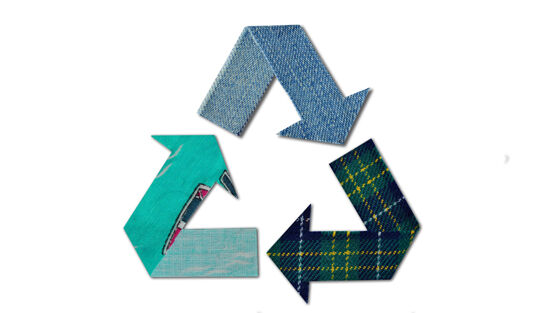Lightfastness, climate change and the Blue Wool Scale
_1.jpg?width=750)
UV light fades and degrades printed products over time. And the problem is only going to get worse as global warming increases.
As climate change slowly heats up the earth, the lightfastness of printed outdoor products is increasingly coming under pressure. Even in historically more temperate areas in northern Europe, UV irradiance has increased by approximately 7% in winter and spring and by 4% in summer and autumn in the past few years.
The reflection degrees of the sun rays relative to the earth axis are different, so varied climates are experienced in different countries at the same time. For instance, the lightfastness of printed ink films exposed to sunlight in the northern hemisphere will be lower in summer and higher in winter (Pritchard, 2010).
As a rule, lightfastness of printed work exposed to sunlight will be lower near the equator and higher as one move towards the poles.
When printed products are exposed to UV radiation from sunlight outdoors, the colours fade and degrade over time due to the breakdown of the ink pigments caused by the UV rays, essentially ‘bleaching’ the print, making it lose its vibrancy and colour saturation. This is a significant concern for outdoor signage, banners and labels where prolonged sun exposure is expected, and sellers of print into more southerly markets need to take care their products adhere to higher standards of lightfastness.
Particulate matter from car exhausts and industry can also accelerate the degradation process of outdoor printed products. And many advertising materials, such as vehicle wraps and outdoor signs, require regular cleaning – and soap and water can diminish visual appeal.
The duration of printed matter’s exposure to hotter weather may be shorter, and we can only expect that to increase
In addition, changes in advertising patterns have an effect. Brands are more eco-conscious and desire more sustainable materials and digital signage, personalised ads and interactive or 3D. In a quest for agility, they want to change their messaging more frequently and be more receptive to consumers’ wants. So, the duration of printed matter’s exposure to hotter weather may be shorter, and we can only expect that to increase. Either way, printers’ cost-efficiency may be impacted by multiple iterations of the same work or by needing to invest in more highly durable – but still eco-friendly – products: clients are unlikely to be considerate of artwork fading quicker than they have foreseen.
Blue Wool Scale
The length and intensity of a print’s exposure to sunlight is crucial to the length of its life. The Blue Wool Scale (BWS) is a standardised test used to measure the lightfastness of dyes, pigments and inks – essentially how well they resist fading when exposed to light, particularly UV light. This colour scale consists of wool fabric strips coloured with eight blue colourants, increasing regularly from 1 to 8 – 1 indicates very poor lightfastness (fades quickly) and 8 indicates excellent lightfastness (extremely resistant to fading). The test involves exposing these strips to xenon light, which accelerates the fading that would occur in sunlight. The fading of the test sample is then compared to the blue wool references.
BWS references are designed to fade in a geometric progression. Each successive reference takes twice as long to fade to the same grade as its predecessor. So substrates with a lightfastness to light of 6 is twice as good as a fabric which has colour fastness to light of 5.
| BWS | Xenon Arc Lamp | Sunlight | Comments |
| 1 | 0.5 to 2 hrs | 5 hrs | Very Poor |
| 2 | 2-4 hrs | 12 hrs | Poor |
| 3 | 1 day | 2 days | Fair |
| 4 | 3 days | 5 days | Moderate |
| 5 | 6 days | 12 days | Good |
| 6 | 8 days | 1 month | Very good |
| 7 | 12 days | 2 months | Excellent |
| 8 | >30 days | > 3 months | Outstanding |
Table courtesy of Journal of Graphic Engineering and Design
While the BWS is a widely accepted standard for measuring lightfastness, different regions and industries have varying approaches due to climate differences, particularly in hotter, sunnier countries where UV exposure is more intense.
For example, in Europe, the ISO 105-B02 standard for textiles and ISO 12040 for printing is used. Indoor applications typically require a BWS rating of 4-5, while outdoor applications often need 6-8. Southern Europe (Spain, Italy, Greece) requires stricter testing due to higher sunlight intensity.
The heat is on
Hotter countries require stricter lightfastness testing because sun intensity means colours fade much faster. Equatorial regions experience consistently high UV levels year-round, for more hours a day. Heat also speeds up the photodegradation of dyes and pigments and higher humidity and pollution can also degrade materials faster.
Higher blue wool references are required in these countries: for example, in the Middle East and Australia, with high UVB exposure considerations, printers require blue wool 7-8 with additional anti-UV laminates. In Australia, AS 2001.4.21 standard integrates Blue Wool testing with additional Xenon Arc accelerated testing and textiles, signage and automotive interiors must meet higher durability standards compared with cooler climates.
In Southeast Asia, printers follow ISO 105-B02 and often use moisture-resistant coatings, eco-solvent or latex inks, UV-resistant laminates and PVS-free synthetic papers for pollution resilience. And in the ‘sunbelt’ of the US, ASTM G154 Xenon Arc Testing simulates intense sun exposure and Blue Wool 7+ is required.
Print products will have to be replaced more often or investments made in premium, more heat-resistant and weatherproofed substrates and inks
Higher temperatures over the coming years will degrade inks and substrates at a more rapid pace. Print products will have to be replaced more often or investments made in premium, more heat-resistant and weatherproofed substrates and inks, such as pigment-based eco-solvent and latex, which are self-sufficient against the elements and can maintain their durability and vibrancy.
Become a FESPA member to continue reading
To read more and access exclusive content on the Club FESPA portal, please contact your Local Association. If you are not a current member, please enquire here. If there is no FESPA Association in your country, you can join FESPA Direct. Once you become a FESPA member, you can gain access to the Club FESPA Portal.
Topics
Recent news

Regulation guidance: Strategy for Sustainable and Circular Textiles
What is the Strategy for Sustainable and Circular Textiles, what does it include and what does the print industry need to consider now to get ahead of compliance? Sustainability communications specialist Rachel England outlines the key facts.

Keep it creative: AI and artistry
Artificial intelligence (AI) is inescapable in many walks of life at the moment – but we’re only at the beginning of our understanding of its impact on creativity. From designers through to artists, it’s already showing the potential to disrupt our normal modes of creation – we take a look at whether AI is helping or hindering creatives.

